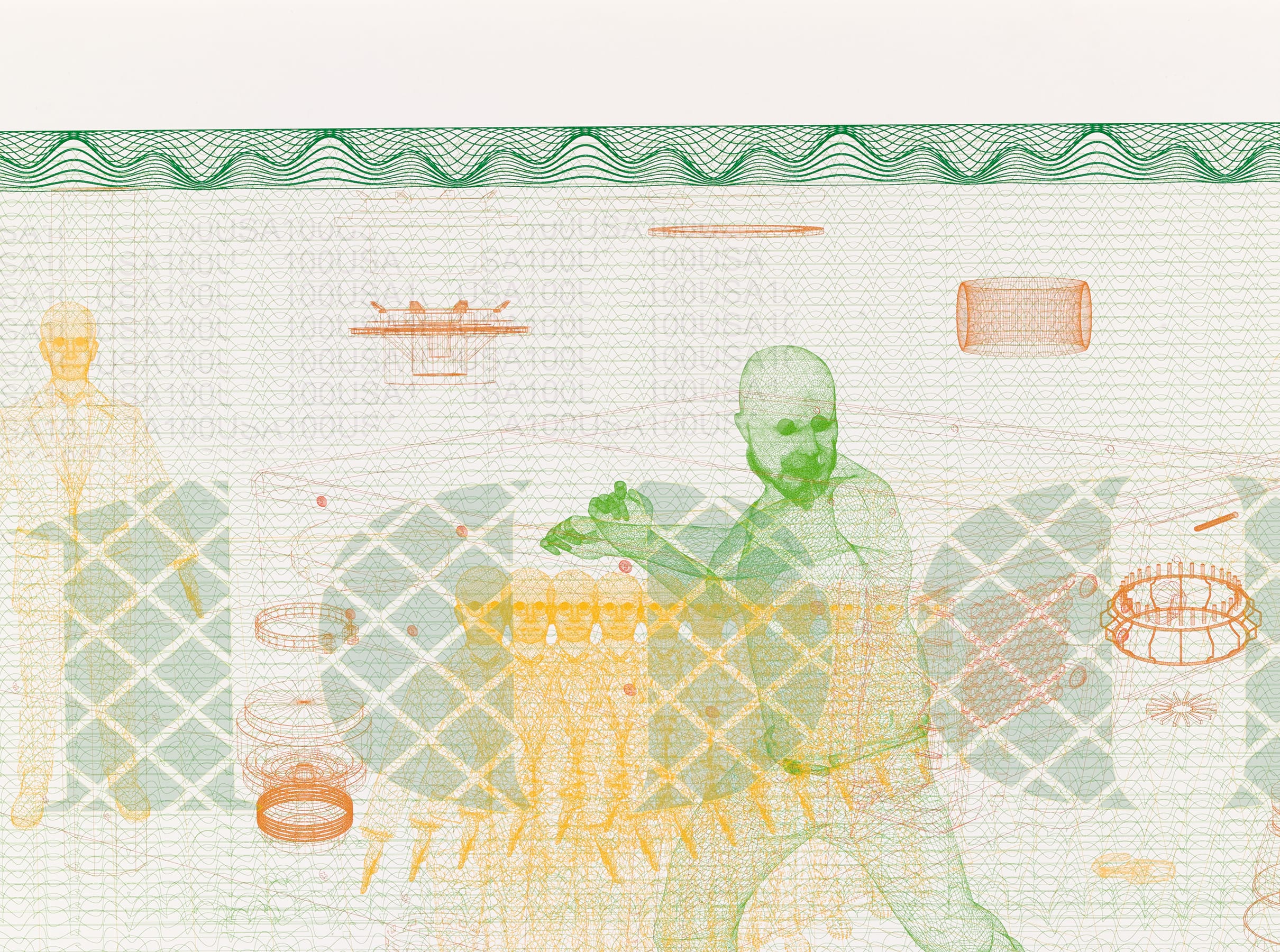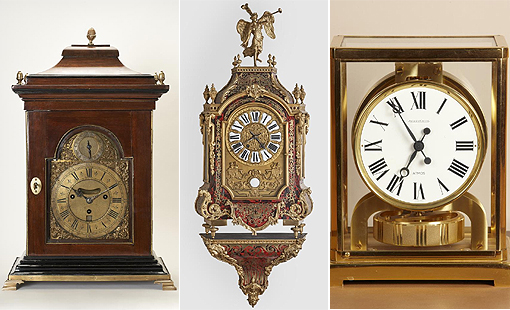
A guided tour of the Banco de España's collection of timepieces
In 1783 the Banco Nacional de San Carlos![]() , which is considered to be the earliest forerunner of the Banco de España, acquired an English table clock made by Thomas Windmills as a decorative piece for its building on Calle de la Luna in Madrid. Starting with this first timepiece, the Banco de España has accumulated a collection that now numbers over 100, dating from the 18th, 19th and 20th centuries and including pieces from Europe's leading schools of clock-making.
, which is considered to be the earliest forerunner of the Banco de España, acquired an English table clock made by Thomas Windmills as a decorative piece for its building on Calle de la Luna in Madrid. Starting with this first timepiece, the Banco de España has accumulated a collection that now numbers over 100, dating from the 18th, 19th and 20th centuries and including pieces from Europe's leading schools of clock-making.
Amelia Aranda Huete![]() , Curator of Timepieces and Silverware for the Patrimonio Nacional [National Heritage Dept.]
, Curator of Timepieces and Silverware for the Patrimonio Nacional [National Heritage Dept.]![]() Royal Collections takes us on an online tour of the timepieces in our art collection. This is the latest instalment of our Itineraries section, in which outside authors are invited to give us their personal impressions of specific aspects of the Collection, help to open up the rich heritage of the Bank to society in an educational, approachable way.
Royal Collections takes us on an online tour of the timepieces in our art collection. This is the latest instalment of our Itineraries section, in which outside authors are invited to give us their personal impressions of specific aspects of the Collection, help to open up the rich heritage of the Bank to society in an educational, approachable way.
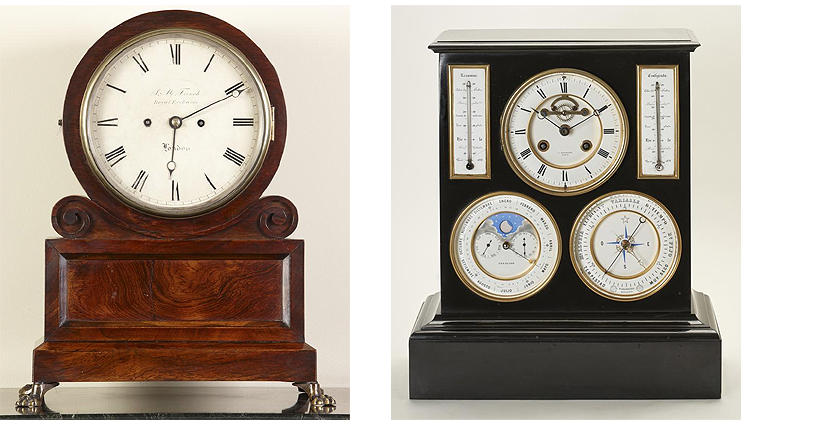 Table clocks by James Moore French and José de Hoffmeyer
Table clocks by James Moore French and José de Hoffmeyer
Aranda Huete has selected around twenty timepieces, most of them acquired from antique dealers in Madrid in the 1970s to be placed in meeting rooms and offices at the central headquarters building on Plaza de Cibeles and at our regional offices. However, some of the most interesting pieces, such as two clocks made by José de Hoffmeyer and British clock-maker James Moore French, were acquired during the reign of Isabella II in the mid 19th century, at the time when the bank took its current name.
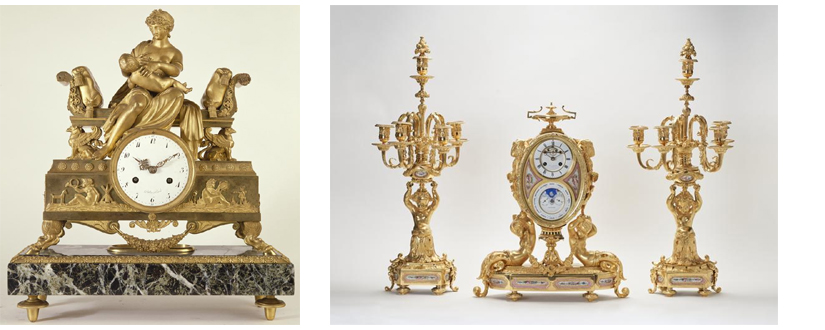 Table clock: 'Allegory for motherhood' (Antoine Gaulin) and Companion Pieces, with table clock and two candelabra (Peña y Sobrino)
Table clock: 'Allegory for motherhood' (Antoine Gaulin) and Companion Pieces, with table clock and two candelabra (Peña y Sobrino)
Most of the timepieces in the Collection, including the two mentioned above, are table clocks. Many come with companion pieces such as matching candelabra and vases to highlight their position as the focus of decoration. Aranda Huete writes that the casings of these clocks are made of gilded and blued bronze, marble, porcelain and wood of the highest quality. They showcase many of the styles which were prevalent in clock-making from the late 18th century to the mid 20th, such as Imperial, Restoration, Second Empire and Art Decó.
In her Itinerary, Amelia Aranda Huete focuses on two particularly striking pieces: one is the so-called "Monumental Clock" on the Trading Floor![]() of the Banco de España headquarters building. This clock was erected at the suggestion of José Yarnoz Larrosa
of the Banco de España headquarters building. This clock was erected at the suggestion of José Yarnoz Larrosa![]() , the architect who masterminded the first extension of the building in the 1930s. Its monumental body is in an Art Decó style, and it is designed to cast light indirectly into the hall. It also houses an extractor fan system. The second piece looked at in detail is the "Tower Clock" that tops the façade on the corner of Plaza de Cibeles. Built in London in 1890 by British clock-maker David Glasgow, it was installed by Madrid clock-maker J. Ramón Garín, who also handled its maintenance in the years that followed.
, the architect who masterminded the first extension of the building in the 1930s. Its monumental body is in an Art Decó style, and it is designed to cast light indirectly into the hall. It also houses an extractor fan system. The second piece looked at in detail is the "Tower Clock" that tops the façade on the corner of Plaza de Cibeles. Built in London in 1890 by British clock-maker David Glasgow, it was installed by Madrid clock-maker J. Ramón Garín, who also handled its maintenance in the years that followed.
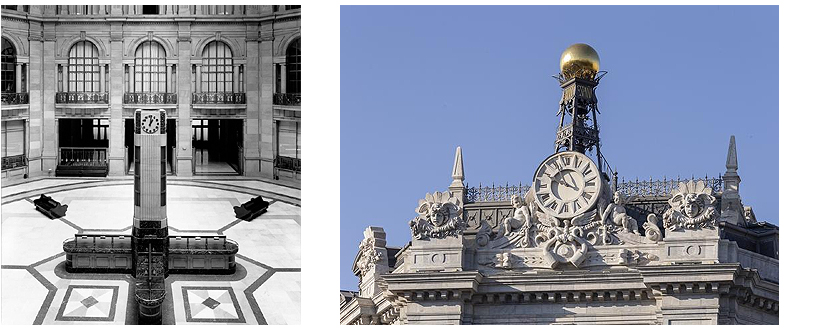 Monumental clock (designed by José Yarnoz Lafuente) and Tower Clock (David Glasgow)
Monumental clock (designed by José Yarnoz Lafuente) and Tower Clock (David Glasgow)
